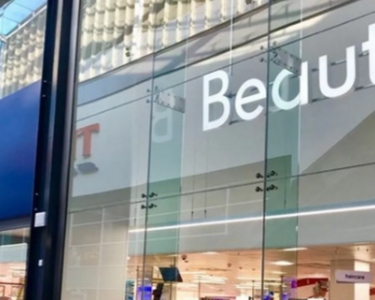As eCommerce merchants look for new ways to reduce the costs and inefficiencies of returns, Perfect Corp. sees augmented reality (AR) as a key solution, mitigating consumers’ dissatisfaction with their products when they arrive.
In an interview with PYMNTS, Wayne Liu, president and chief growth officer at the artificial intelligence (AI) and AR beauty technology company, which recently launched new AR try-on features, explained that, in addition to driving conversion, these kinds of digital experiences can also help reduce return rates, boosting merchants’ margins.
“Virtual try-on helps to reduce returns, because you get the best product, which you like [the most],” Liu said, noting that shade-matching capabilities for products such as foundation goes a long way towards boosting consumers’ satisfaction with the product once it arrives. “…It saves lots of waste. … In the beauty industry, they just throw away returned products. … You don’t know if the customer has already used it, so you won’t be able to really take it back and resell it.”
According to National Retail Federation (NRF) data, the blended return rate for beauty retail purchases is 4.3%, a share that is likely significantly higher when one looks just at eCommerce channels, where products are purchased sight unseen. Overall, the NRF found, returns cost retailers $743 billion in merchandise in 2023.
Keeping Up With the Times
Indeed, beauty purchasing is becoming increasingly digital. The PYMNTS Intelligence study, “Tracking the Digital Payments Takeover: Catching the Coming eCommerce Wave,” created in collaboration with Amazon Web Services and drawing from a survey of nearly 2,700 U.S. consumers, found that 39% say they are very or extremely likely to increase their online purchases of health and beauty products.
Moreover, according to the 2023 PYMNTS Intelligence study “Changes in Grocery Shopping Habits and Perception,” which drew from a census-balanced survey of more than 2,400 U.S. consumers, roughly half of all shoppers are buying personal and healthcare products in stores less often. Plus, 48% of those who purchase these items do not buy them in stores at all.
Yet purchasing beauty products has historically heavily relied on trials — think of all the customers at a given major makeup store trying on new shades of lipstick and foundation.
The core premise of AR try-on technology, as elucidated by Liu, lies in its ability to streamline the product exploration process. By employing digital simulations that adapt to users’ facial features, individuals can virtually test an extensive array of beauty products without the need for physical application and removal.
“We see great conversion,” Liu said, highlighting the example of the company’s work with Benefit Cosmetics, where the brand saw customers’ time spent on the site double and saw add-to-carts rise 20%. “The more the time you spend [on the site], of course, the more you’re going to explore.”
Reducing eCommerce Frictions
Liu contended that the technology eliminates the friction associated with traditional try-on methods, offering consumers a more convenient at-home alternative and a more informed eCommerce experience.
Consumers, for their part, are open to integrating more mixed-reality technologies into the purchasing experience.
PYMNTS Intelligence’s report, “How We Will Pay Report: How Connected Devices Enable Multitasking Among Digital-First Consumers,” found that among the 95% of consumers who own or have in their homes at least one connected device, 38% said they are very or extremely interested in using virtual technology to see how items look in their room before buying them, and 6% already do this. Plus, 32% said they’d be similarly interested in the ability to use VR technology to buy retail products that are in a physical store from their home or office, and 4% already do this.
These kinds of technologies also enable brands to provide more targeted, personalized expertise via digital channels.
“[We’ve used] roughly 70,000 data points — by data, we mean images — to train our engine. So, our engine right now is very robust,” Liu said. “It not only provides you virtual try-on for makeup, but it can understand your skin condition, and then it can recommend a [personalized skincare] routine.”
The Road Ahead
As with any technological innovation, the implementation of AR try-on is not without its learning curves and challenges. Liu acknowledged the complexities involved in accurately replicating colors and textures in virtual environments, particularly accounting for variations in lighting and skin tones.
Looking ahead, Liu said he expects to seize on further advancements in AI and 3D modeling, leveraging generative AI to streamline the creation of 3D models for jewelry and accessories, for instance, expanding the scope of virtual try-on experiences.
Additionally, he acknowledged the challenges inherent in replicating realistic hair simulations but expressed optimism about the transformative potential of AI-driven solutions in overcoming such obstacles. Beyond mere product visualization, Liu said he envisions a holistic approach wherein AI not only enhances the virtual try-on experience but also fosters a deeper understanding of consumer preferences and needs.
“Generative AI really helps a lot,” Liu said. “…Because this generative AI, it can create. So, it gives our customers more opportunities to try different things.”



